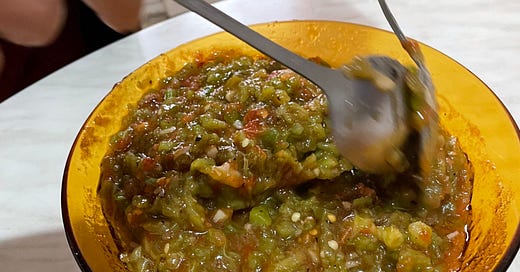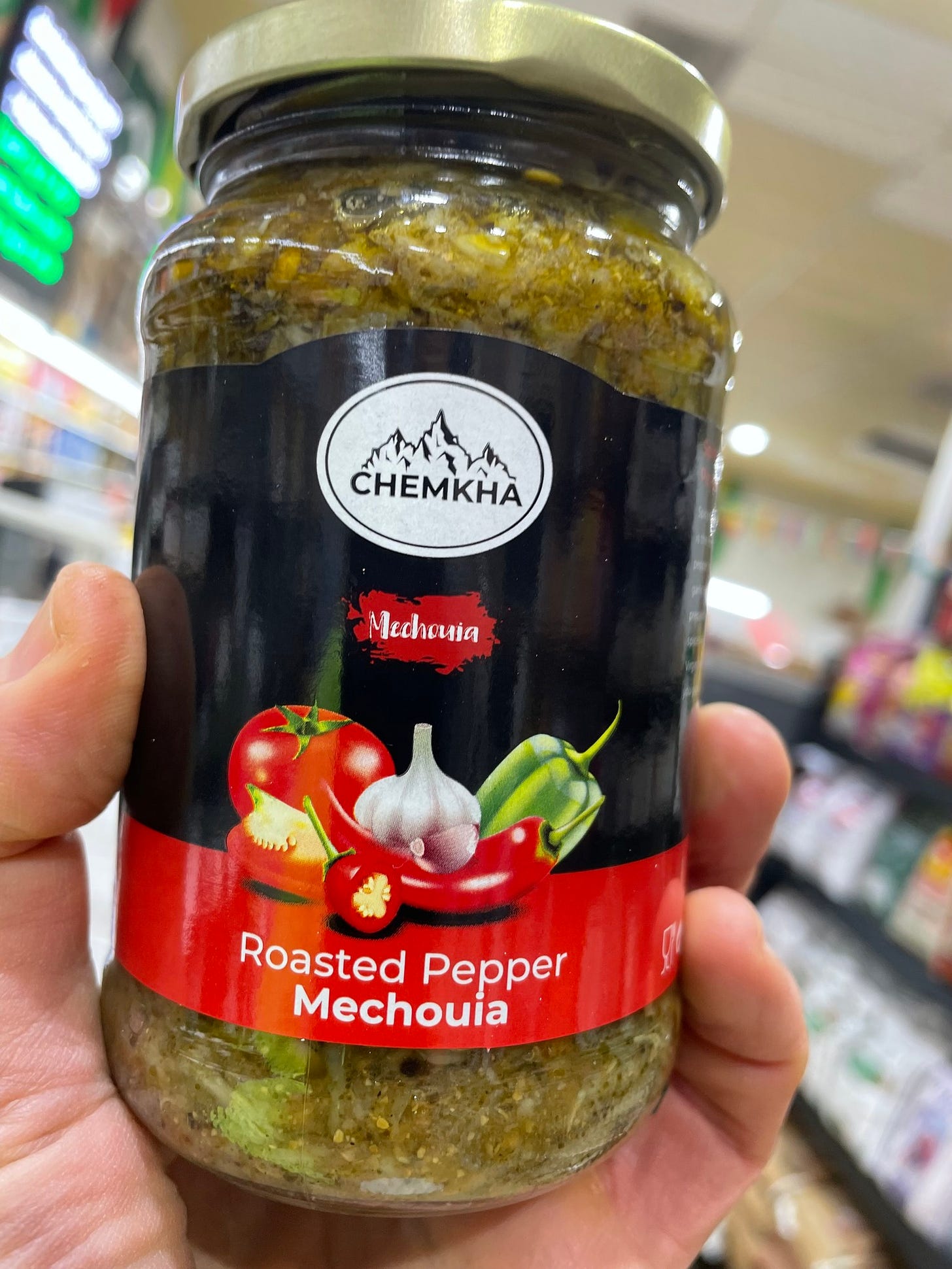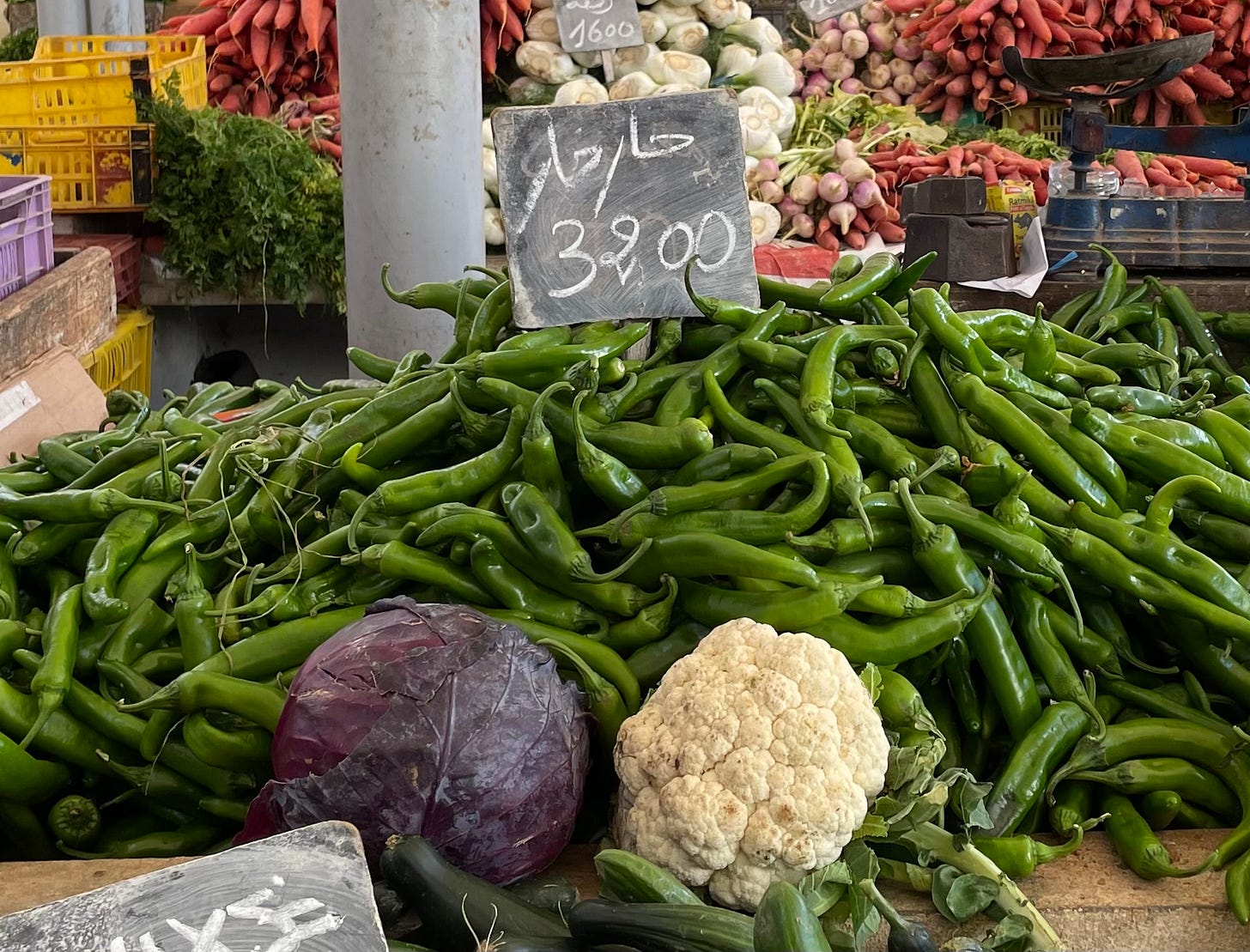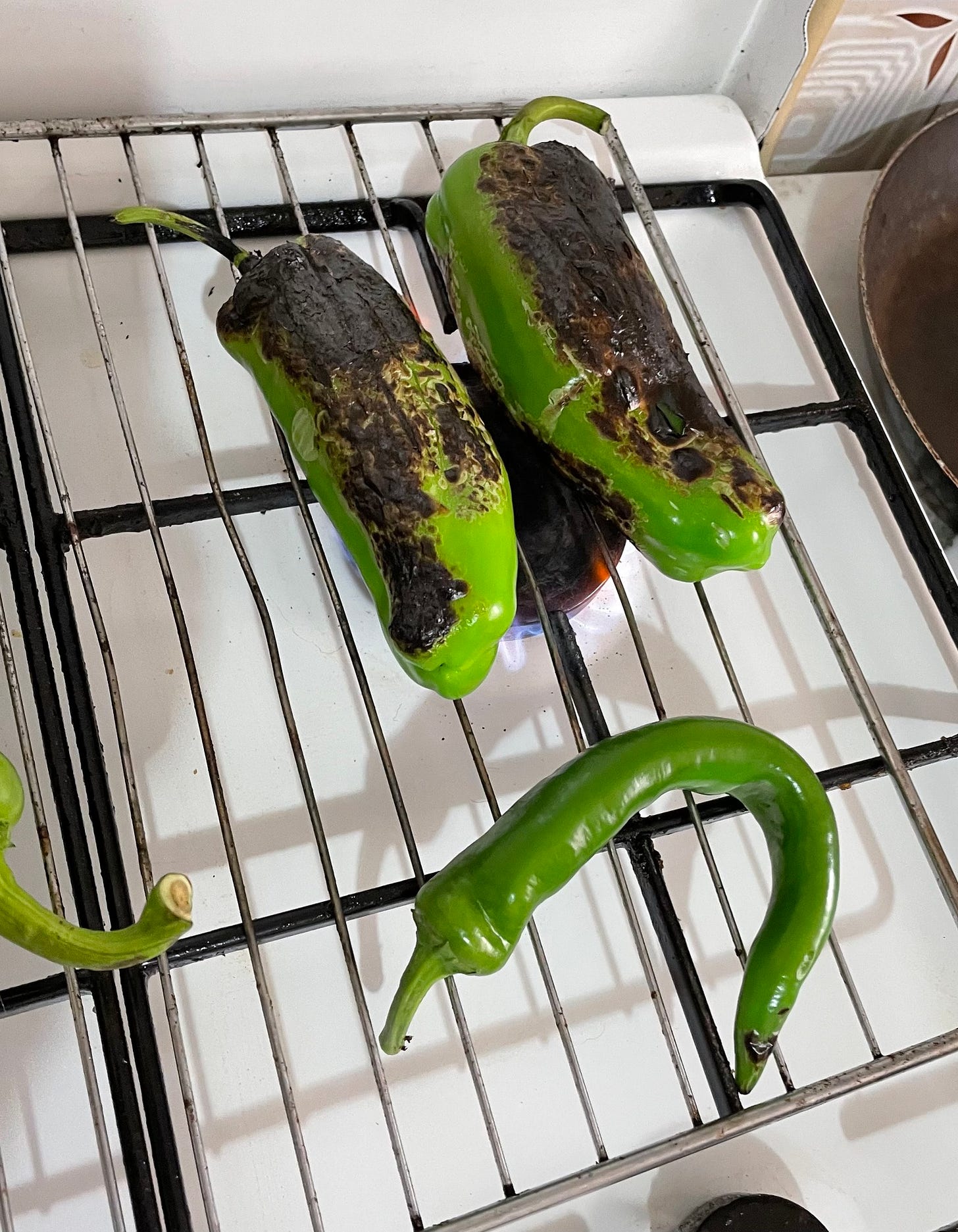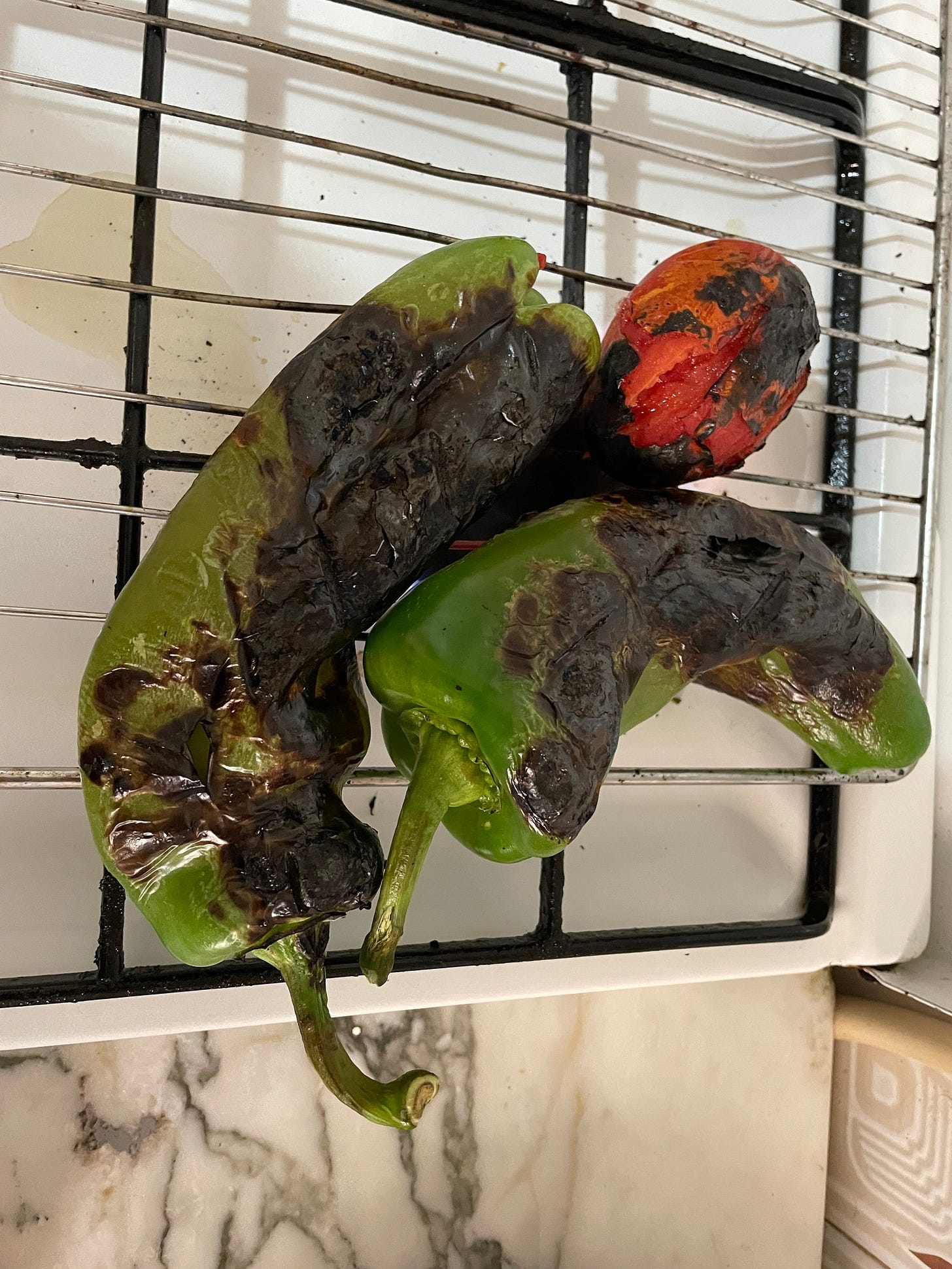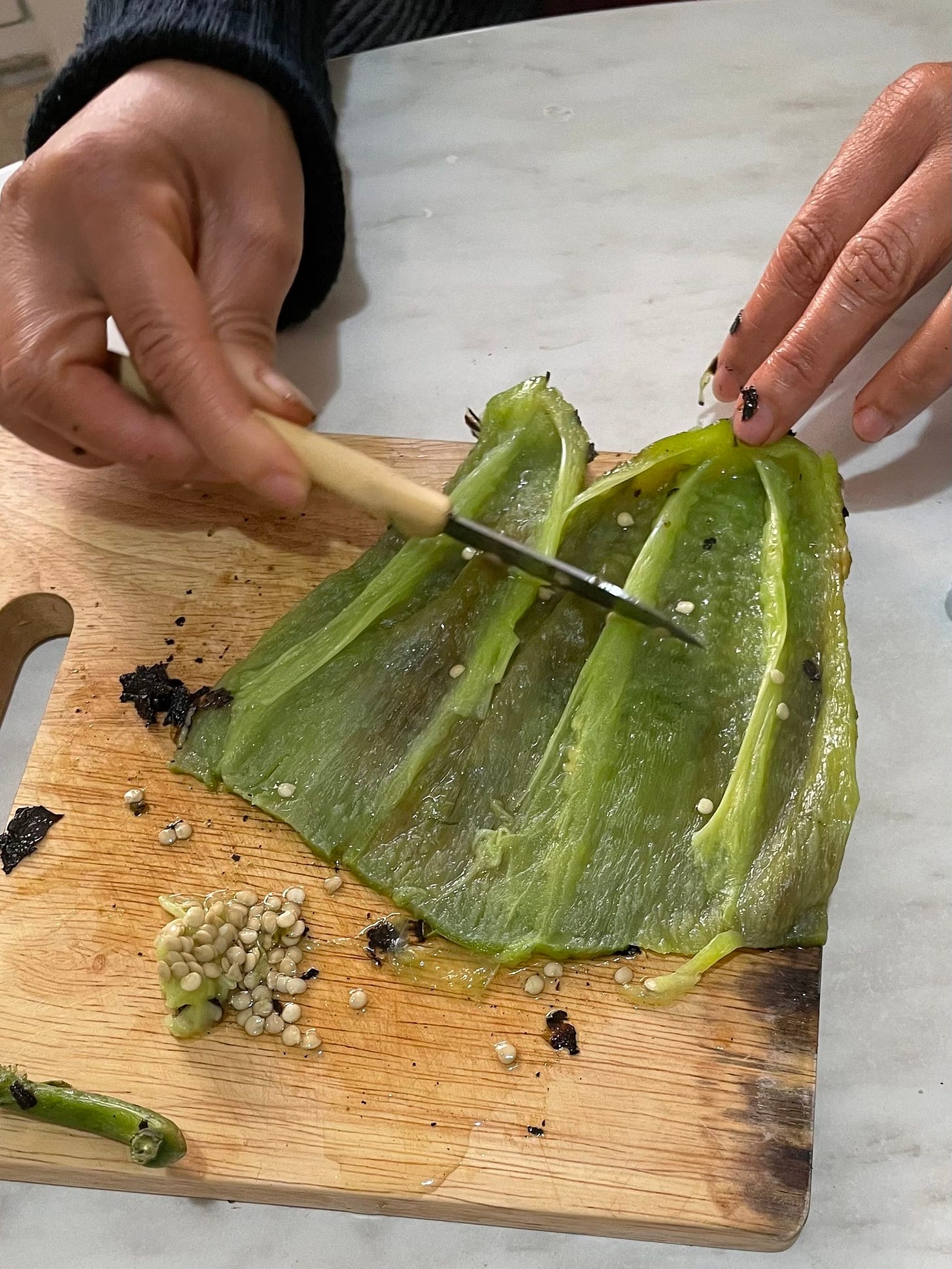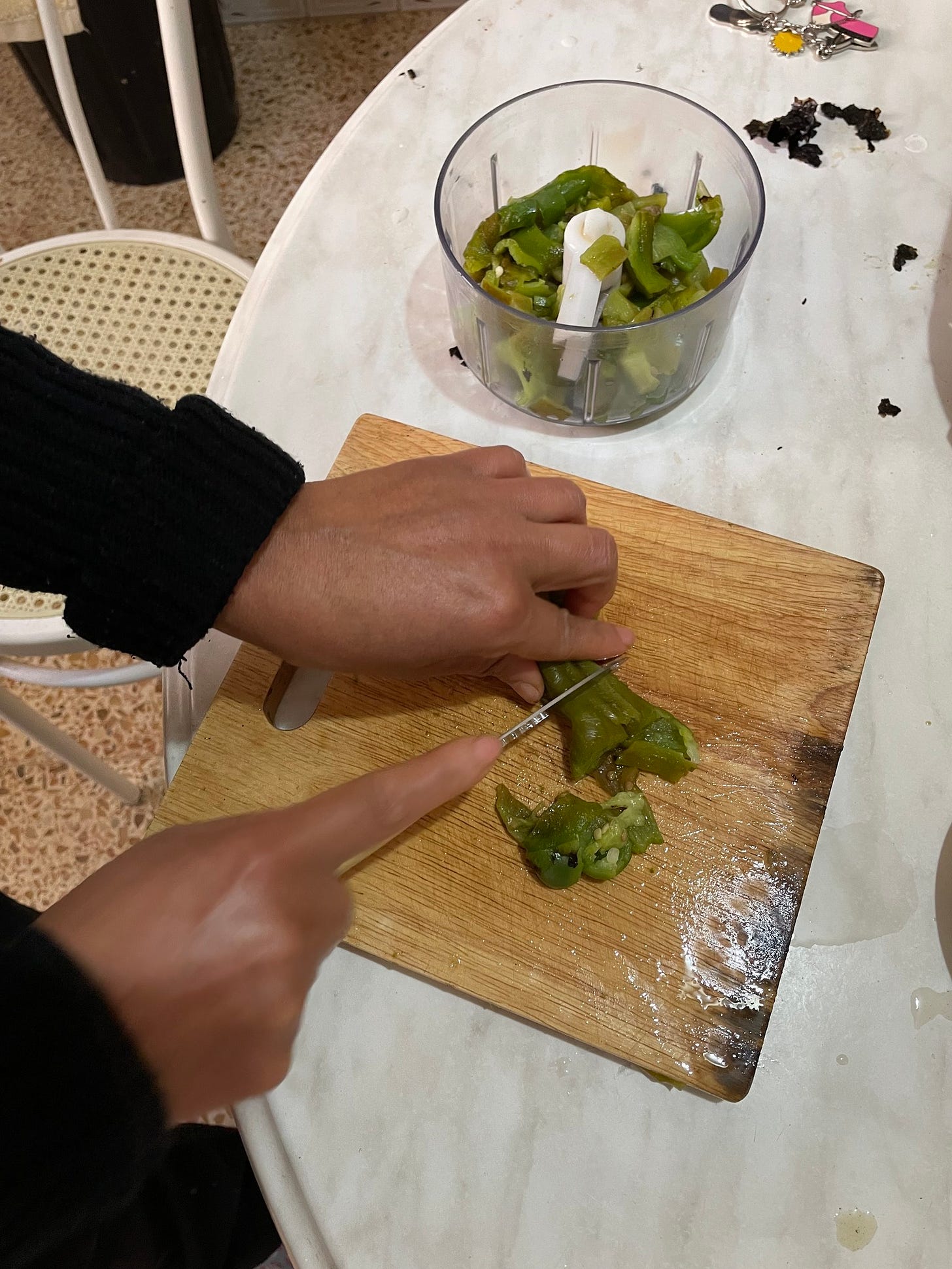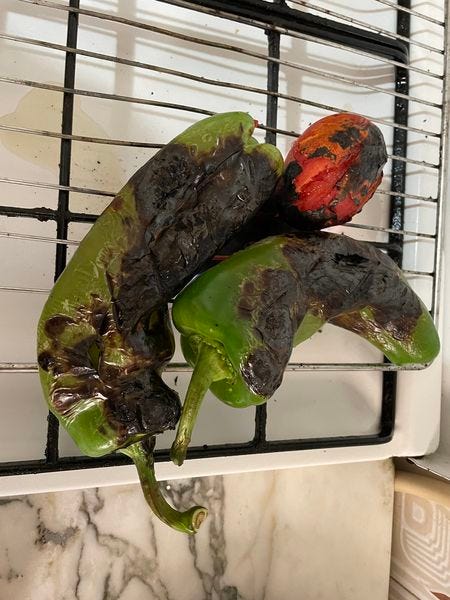(First posted on Facebook on January 24, 2023.)
Here’s a recipe for salata méchioua (Arabic for “grilled salad”), my favorite Tunisian dish (OK, appetizer), one that is scarcely known in the U.S.
Think baba ghannouj, except with roasted, puréed green peppers instead of eggplant (and no tahina but yes garlic). My local Middle East grocery carries salata méchouia in jars, which is not bad but nothing like freshly made. It’s delicious scooped up with pita bread, or served with eggs, like a Tunisian salsa verde.
If you like the recipe below, or have improvements, corrections, or variations to suggest, I’d love to hear from you.
One variation of salata méchouia adds some tomato, roasted and puréed, but I prefer the pure pepper version. If you add tomato, the ratio should still be heavily in favor of peppers.
I won’t list measurements because you can mix the ingredients in the proportions you prefer:
• whole green peppers (see below)
• heads of garlic (one or two) with decent-size cloves (easier to peel)
• olive oil
• salt
• tomatoes (optional)
• (optional) black olives and/or sliced hard-boiled eggs and/or shredded tuna fish
Utensils:
• a sharp paring knife
• a clean, disposable plastic bag to hold the scorched vegetables for 10-15 minutes, which makes it easier to peel them;
• a device for turning the ingredients into a coarse purée: either a large mortar and pestle, food processor, or other device. There is also the traditional “two-knife” method (see video I’ve posted in a comment below this post).
You can adjust the spiciness by varying the types of green peppers that you use. Tunisian cuisine tends toward spicy, unlike Moroccan, which puts the hot stuff on the side for diners to mix in as they wish.
The flat long peppers shown here are the type favored in Tunisia for méchouia. In the U.S., I find that poblanos work well, with a couple of spicier chilis added for zing. If you’re going to scorch the peppers on a gas stovetop flame, which I recommend if you’re not cooking them over an open fire, try to select peppers that are flat rather than gnarled, to make it easier to scorch them evenly and then peel them.
1. Rinse the peppers.
2. Place one or two peppers, depending on their size, on the stovetop flame. You can place an oven rack on top of the stove and place the peppers on the rack.
3. Turn on a medium flame, adjusting the flame depending on its distance to the pepper. As the peppers start to scorch, rotate them, repeating until they are blistered all over. Do not blacken them. Remove and place the peppers in a plastic bag and close the bag. Repeat until all the peppers are scorched and bagged and have sat in the bag for at least 10 minutes.
4. Place the whole garlic heads on the flame, scorching and rotating them as with the peppers. Place the garlic heads in the plastic bag and close it.
5. (If you’re using tomatoes, do same: scorch them whole, then place in plastic bag, seal.)
6. Remove the peppers from the plastic bag and lay them on a cutting board. Run a small, sharp knife lengthwise along the entire outside of the pepper to remove the skin from the flesh. After the peppers have sat in the closed plastic bag, you should be able to do this while keeping the pepper intact or almost. Discard the skin.
7. Split the skinned pepper lengthwise and remove all seeds and innards. Some cooks do this under running water but you lose some of the flavor doing it this way, so avoid it.
8. Remove the garlic heads from the plastic bag and peel the skin from all of the cloves, which should now be mushy.
9. If you scorched tomatoes, peel them too and let them drain a bit in a sieve or colander, so they don’t add too much water to the final mix. Méchioua should be thick and spreadable, not runny.
10. Slice the peppers (and optional tomatoes) into small pieces and place them and the garlic into the vessel you’re going to purée them in: e.g., a large mortar and pestle, a bowl (for the two-knife method), or a food processor.
11. Add olive oil and salt to taste.
12. Mash, slice, or blend the ingredients together until you have a coarse purée.
13. Adjust olive oil and salt to taste, decorate with black olives and/or sliced hard-boiled eggs and/or chopped tuna (all optional), and serve.
14. Fresh méchioua stays good a day or two, if covered and refrigerated.
Enjoy and please send feedback.
All reactions:
38Xiaohua Li, Robert Z.Cohen and 36 others

